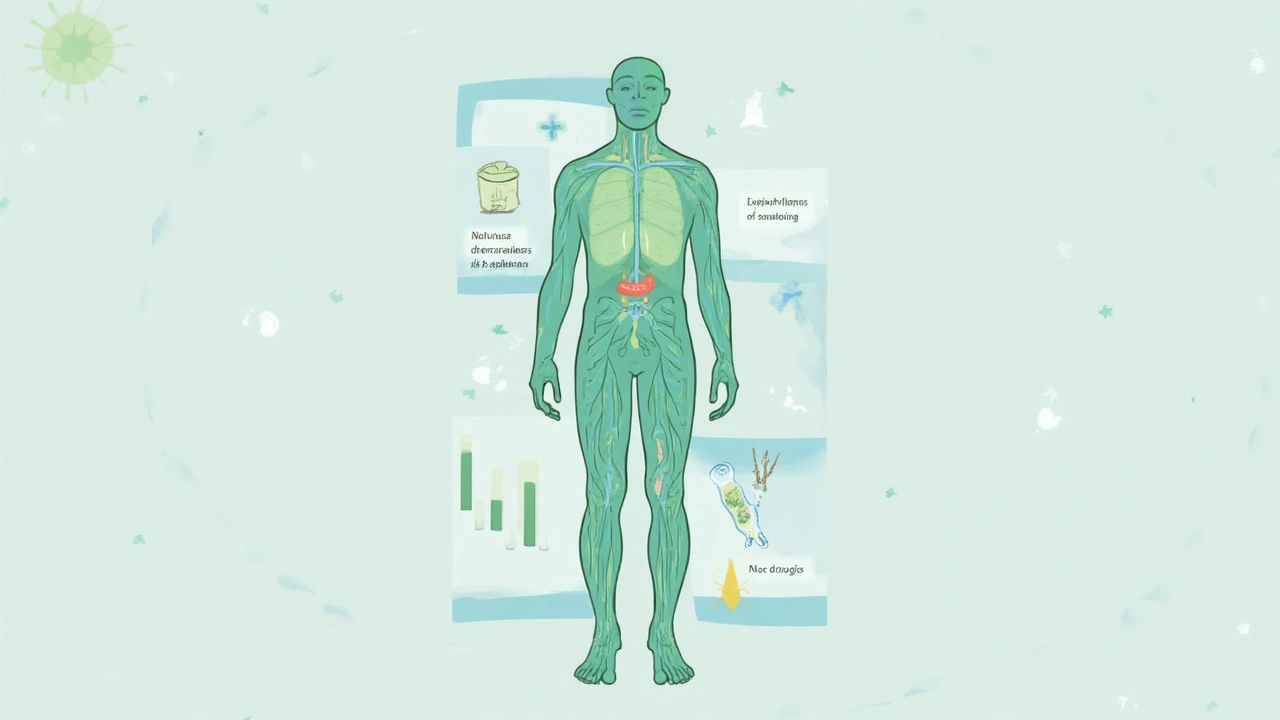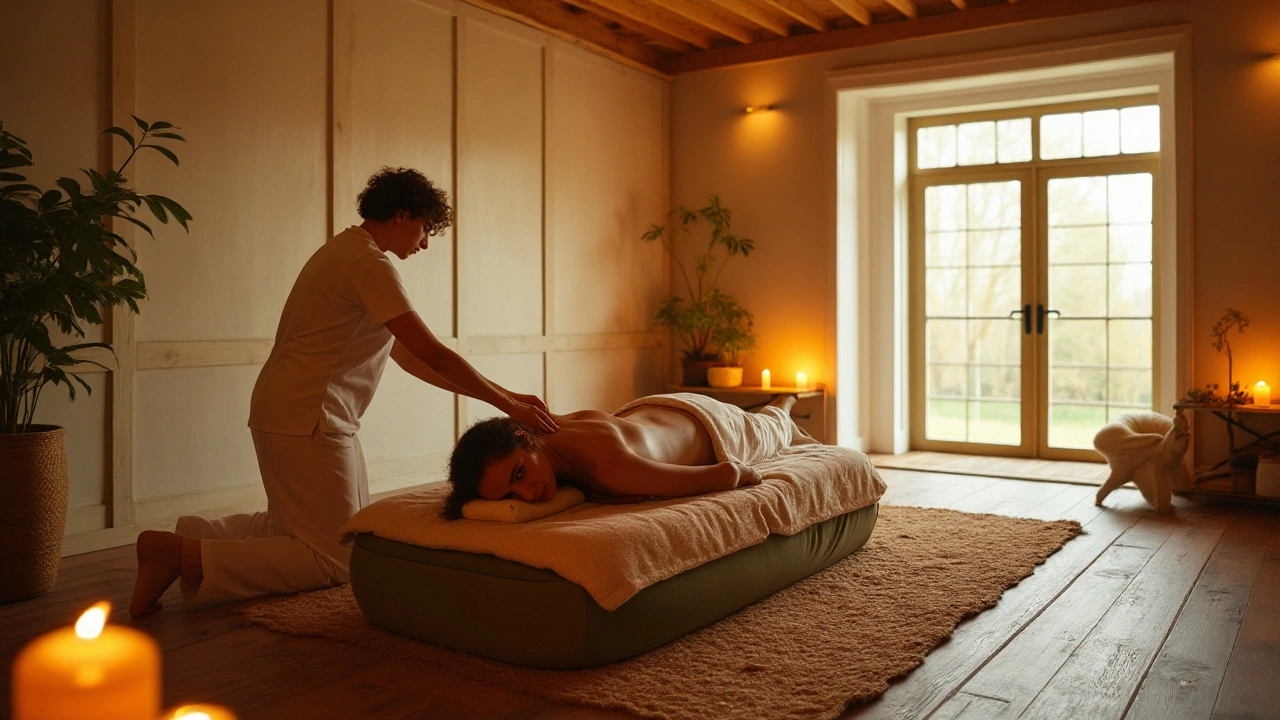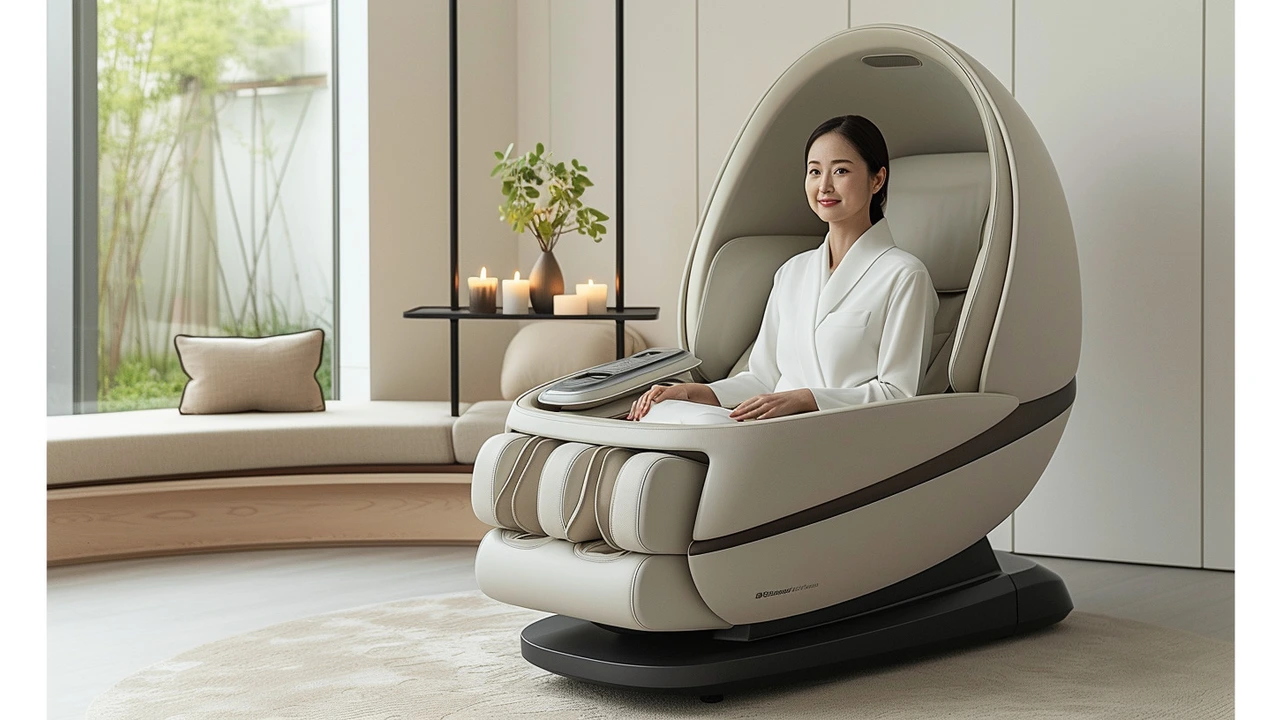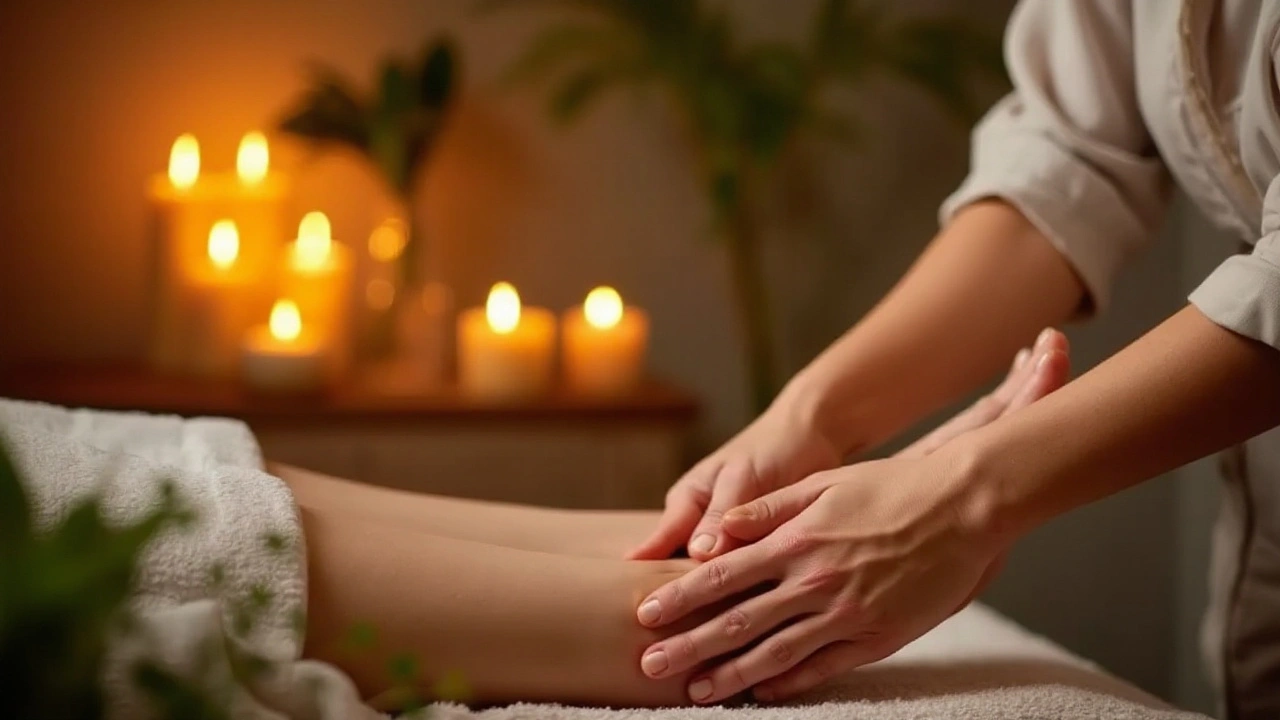Lymphatic Drainage Massage: Boost Your Health Naturally

If you wake up feeling puffy, heavy, or just kind of stuck, you're not alone. It's easy to blame work stress, salty food, or the Toronto humidity, but your body's often just overwhelmed by junk it needs to clear out. The hero in this story? Your lymphatic system, and more people are turning to lymphatic drainage massage to help it do its job—so you feel lighter, healthier, and more energized. But does it live up to the hype, and who actually benefits?
How Lymphatic Drainage Massage Works for Your Body
Your lymphatic system moves fluid and waste out of your body—think of it as your house-cleaning crew. But unlike blood, lymph doesn’t have a pump like your heart. It relies on things like muscle movement and, yes, outside help like massage to keep flowing. That’s where lymphatic drainage massage comes in.
This massage uses very gentle, rhythmic movements to encourage lymph fluid to move toward your lymph nodes (those little bean-shaped filters you sometimes feel getting sore when you’re sick). It targets puffiness, swelling (called lymphedema), and can give your whole immune system a solid boost. After a session, folks often report feeling refreshed, less bloated, and sometimes even sleeping better. Is that placebo or science? Turns out, it’s both. Plenty of studies from the past two decades have shown it can really move fluid and reduce swelling, especially after surgery or injury.
Not just for post-surgery patients, either—people with chronic bloating, allergy sufferers, and even gym-goers dealing with sore muscles have all reported relief. In fact, a clinical review in the Journal of Lymphology (2023) described it as “a safe, non-invasive therapeutic tool for reducing edema and enhancing both physical and mental well-being.”
| Benefit | Evidence Level (2023) | Typical Users |
|---|---|---|
| Reduces swelling (lymphedema) | Strong | Post-surgery, cancer recovery |
| Improves sleep and mood | Moderate | Anyone under stress |
| Detox and immune boost | Moderate | Bloating, allergies, athletes |
| Reduces sinus pressure | Emerging | Sinusitis, allergy sufferers |
But heads up—this isn’t your deep-tissue, knot-breaking massage. It’s softer and slower, so if you find yourself zoning out, that’s actually part of the point.
What to Expect During and After a Session
So, what actually happens during a lymphatic drainage massage? Picture gentle, sweeping, skin-level strokes—usually starting from your neck and working down to your torso, arms, and legs. Therapists target lymph pathways, often following a set order to get the fluid moving out of the congested spots and toward the big lymph nodes under your arms, at your collarbone, and in your groin.
Most sessions last between 45 to 90 minutes. You’ll usually be partially clothed, lying under a sheet or towel—think spa, not medical exam. The pressure is so light that, honestly, you might wonder if it’s working. Some describe the sensation as relaxing or even hypnotic. Afterward, people often notice they have to pee a lot (your body flushing out waste), and swelling or puffiness—especially in the face, hands, and feet—can go down within hours.
Can you do anything to help? Sure. Drinking more water before and after flushes waste faster. Mild movement—think easy walks—helps too.
- Avoid big meals or lots of caffeine right before.
- Tell your massage therapist about any health conditions (like heart problems, infections, or recent surgeries).
- If you’re super sensitive or ticklish, let them know—it’s adjustable.
If you’re dealing with something like cancer or a vascular disorder, make sure your doctor is on board first.
Proven Benefits (and the Hype) of Lymphatic Drainage Massage
The big selling points are swelling reduction, detox, and an immunity bump. The science backs some claims more than others. After orthopedic surgeries or breast cancer, lymphatic drainage speeds up recovery and reduces painful swelling—that’s not up for debate.
For “everyday” stuff—think those puffy under-eyes or after a long flight—the evidence is a little lighter, but strong enough that many clinics now offer cosmetic lymphatic massage. I tried it last winter after a holiday salt binge and, honestly, felt way lighter and less foggy the next morning.
People with allergies or sinus congestion sometimes find their symptoms calm down, though how long it lasts depends on the person. One thing that's true: this massage won’t magically melt fat, and it definitely won’t “detox” you like a weekend juice cleanse. Your kidneys and liver do most of that heavy lifting—but helping the lymphatic system work properly can amplify those good results.
“Manual lymphatic drainage improves quality of life in patients with lymphedema and can be safely combined with most standard therapies.” — Canadian Physiotherapy Association, 2024 consensus report
Side effects? Rare, but if you’re fighting an infection or have major heart or kidney issues, skip it. The same goes for any unexplained pain or fever—play it safe and call your doc.

DIY Tips, Pro Advice, and What to Watch For
Want to try it at home? You can, especially for face and neck areas. After consulting a therapist, I picked up a simple self-massage routine: light, two-finger strokes down my neck toward the collarbone, moving fluid toward lymph nodes. It’s most helpful after waking up or when feeling sluggish. Amelia likes pairing it with her skincare routine, and swears she looks less puffy on Zoom calls.
There are pitfalls, though. Pressing too hard, moving too fast, or massaging in the wrong direction won’t do anything (or might even make swelling worse). Go gentle. Stick to slow, outward, downward movements. There are tons of videos, but stick to those by registered massage therapists or lymphedema specialists—Toronto has several pros with legit training if you want the real deal.
Here’s a quick DIY guide:
- Start with clean, dry hands and a relaxed face. Sitting or lying down works.
- Very gently, use your fingertips to stretch the skin on your neck downward toward your collarbone.
- Move from near your ears down along the sides of your neck—think 10 slow strokes per side.
- For your face, start at your cheeks, moving fingers outward and then down toward your jaw and neck.
- Drink a big glass of water afterward.
If you’re booking a pro, check their qualifications. In Ontario, massage therapists are regulated—look for RMT credentials and, if you’re targeting swelling from surgery or cancer, ask about extra lymphedema therapy training.
If you feel worse after a session (dizzy, feverish, skin rash), let your provider know. It’s rare, but worth mentioning.
- Drink extra water post-massage.
- Pair with light exercise and healthy eating for best results.
- Consult your GP if you have any chronic health conditions.
- Avoid deep pressure or vigorous massage—slower is better here.
| Do | Don't |
|---|---|
| Use gentle, slow movements | Apply deep pressure |
| Follow lymph pathways (downward/outward) | Massage toward the center of the face/body |
| Stay hydrated before/after | Skip water intake |
| Check for real qualifications | Go to unlicensed spas for medical needs |
Mini-FAQ: Your Top Lymphatic Massage Questions Answered
- How often should you get a lymphatic drainage massage? For healthy people, once every few weeks is usually enough. If you have lymphedema or just had surgery, follow your doctor or therapist’s plan (sometimes 1-2x/week).
- Does it hurt? Not at all—it’s very gentle. If it hurts, they’re doing it wrong.
- Any reasons to avoid this massage? Yes: If you have heart failure, kidney problems, blood clots, bad infections, or an active cancer, clear it with your doctor first.
- Can you do it yourself? For mild swelling or puffiness, yes! Just go slow and don’t use pressure.
- How long do results last? Swelling or puffiness may go down for several days, but repeat sessions may be needed for lasting results.
Next Steps: Which Approach Fits You?
- If you’re post-surgery or in cancer rehab: Find an RMT with lymphedema training through local hospitals or clinics—their work is proven effective and safe.
- If you just want to fight everyday puffiness or fatigue: Look up reputable massage therapists, or try a gentle DIY routine at home—pair with a healthy lifestyle for best results.
- If you’re unsure whether it’s right for you: Book a quick phone consult with a trained massage therapist. They’ll screen out any risks.
- If you’re looking for an at-home boost: Start slow, use gentle downward strokes, and stay consistent.
Lymphatic drainage massage isn’t magic, but when done right, it’s a real, practical way to help your body clear out the junk and keep you feeling energetic. It’s easier than most self-care fads and surprisingly affordable in 2025—Toronto clinics average $85–$120 per session, with many insurance plans covering registered treatments. That’s a fair trade for feeling lighter, sleeping deeper, and rolling into Monday with more energy than you thought possible.





